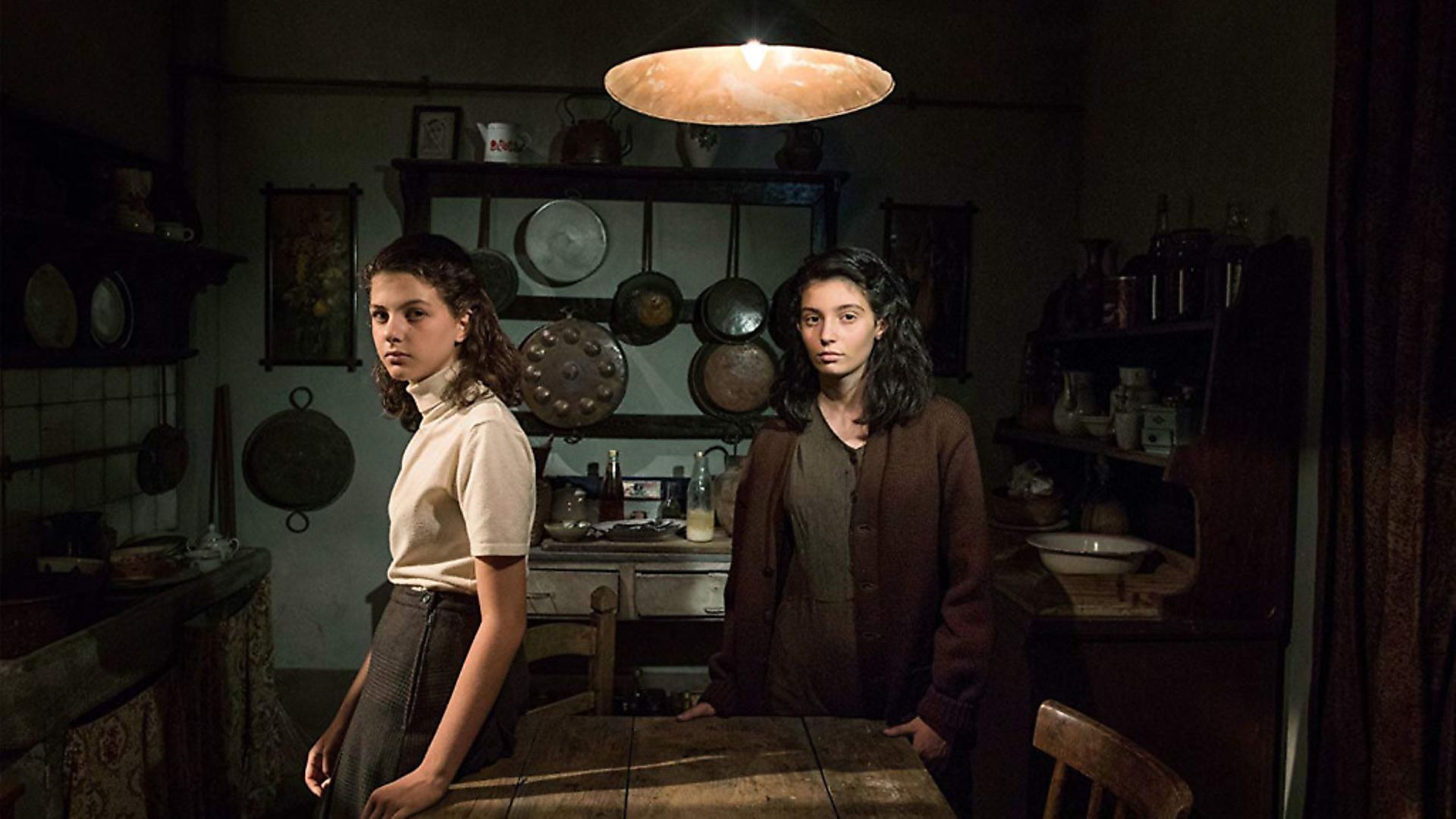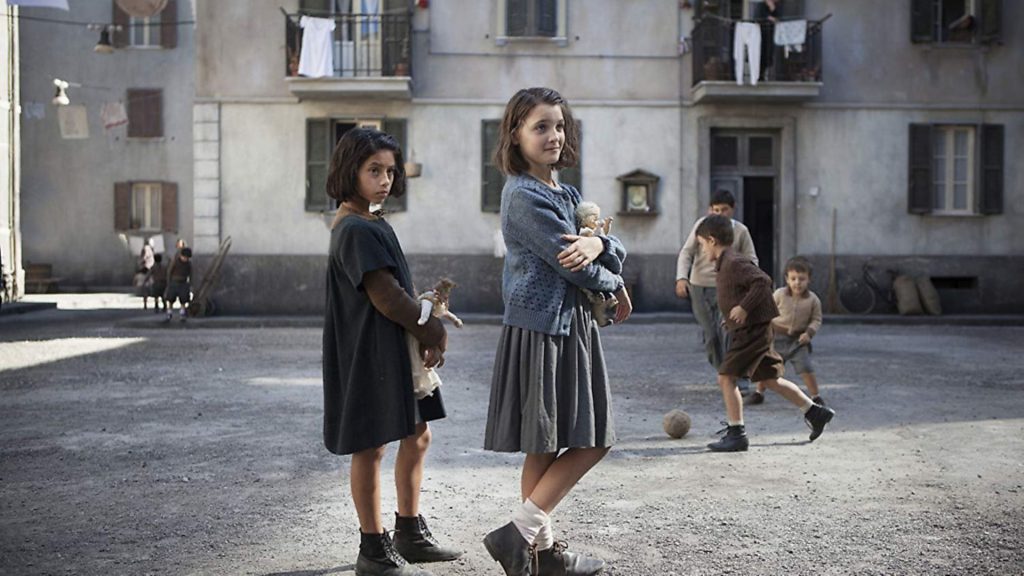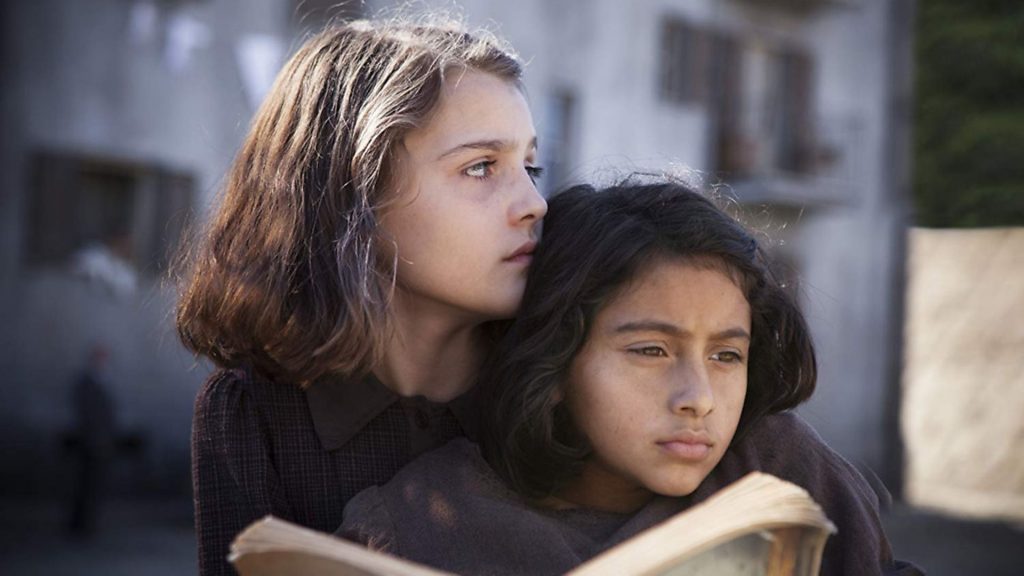
LARA WILLIAMS on the incredible appeal of Elena Ferrante’s series of novels, beginning with My Brilliant Friend, and the way they have given a voice to Italian women.

Italian novelist Elena Ferrante’s series of four novels, the Neopolitan tetralogy, tells the story of two intelligent, energetic girls growing up the poor and often brutal suburbs of 1950s Naples. It follows their intense friendship from pre-pubescence through to late middle age, and has become a cult hit of unprecedented proportions – not least for a work in translation.
A second HBO series has just been commissioned, after the critically-acclaimed first season saw viewers in the millions. Devotion to the novels has seen literature fans flock to Naples – and there’s even a dedicated tour of the city named after one of the novel’s protagonists: the Looking For Lila tour.
However those searching for the series’ creator may find themselves disappointed, as Elena Ferrante is a pseudonym, and the true identity of the author is not definitively known – despite numerous attempts to unmask her. Just what is about the novels that inspires such fervent interest and devout fandom?
Originally published in 2011 by Rome-based publishing house Edizioni E/O, the books have since gone on to sell more than 10 million copies in 40 countries. Alessia Risi, an associate lecturer in Italian at the University of Exeter, believes it is partly because of Ferrante’s depiction of domestic violence and the multifarious ways women and their bodies are controlled. ‘I would argue that the novels are highly representative of the challenges faced by Italian women, both historically and still to this day,’ she says. ‘My Brilliant Friend is overwhelmingly relevant and echoes on the historical plane women’s battles and the struggle to have their rights acknowledged.’

Risi also sees the period the novels cover as fundamental to their appeal: the economic boom of the 1950s and 1960s, the sexual revolution of the 1960s and 1970s, as well as the collapse of the left and deterioration of the Italian political system from the 1980s onwards.
More specifically, Risi feels the appeal is because of the gendered lens through which Ferrante addresses these tumultuous times. ‘Ferrante retells history from a feminist historical consciousness,’ she says. ‘She retells Italian history from the aftermath of the Second World War through to the new millennium, from a [female] viewpoint, that has often been marginalised, if not completely ignored.’
And it is perhaps because of the expanse of time the novels unfurl across that they are so hard to categorise. ‘They are a convergence of different genres,’ Risi says, ‘the romance novel, the coming-of-age novel, and the historical novel.’
Carolina, an Italian writer and blogger currently based in London, believes Ferrante’s work has resonated in part because of their unflinching accounts of how complicated everyday life can be. Violence exists as a kind of perpetual backdrop in the series, whether on the streets of Naples or inside the home – something which has perhaps influenced Carolina’s own novel, Bar/Tender, which centres around an abusive relationship. But more specifically, she believes the novels have something to say about being an Italian woman. ‘I think it paints a picture of the pressure that’s on you,’ she says.’You’ve got to be there for your family, you mustn’t shame them by being too promiscuous or rebellious, and there’s this huge emphasis on beauty. There’s this weird idea that if you’re pretty you’re also good. Of course it’s more complicated than that, but in the pre-feminist society that’s narrated in the book this is how it went.’
The depiction of women, and particularly of female friendship, is often credited as the reason behind the series’ success. However Silvia Caserta, a lecturer in comparative literature and Italian at the University of St Andrews, believes there is something more complicated at play: the way in which the works have been translated.
‘My first encounter with Ferrante’s novels is particularly interesting,’ she says. ‘I was a graduate student at Cornell [University, New York], teaching Italian language to a group of elderly women from upstate New York. I was teaching a level of Italian that was really quite advanced, and our weekly meetings consisted of a two hour conversation in Italian. The first hour was devoted to current topics, and the second was a discussion of a book – the first of which was My Brilliant Friend.
‘They had all read My Brilliant Friend in English and wanted to tackle it in Italian. But despite their advanced level of Italian, they found the novels difficult to read, and were quite surprised by the high level of linguistic complexity.’
The tetralogy was translated into English by American editor and translator Ann Goldstein. Her translations have been accused of simplifying Ferrante’s phrasings, though some have claimed Goldstein’s pared-down interpretation is actually the better written version. ‘Goldstein has purposefully removed some of the linguistic and stylistic aspects that contribute to the complexity of the novels,’ Caserta says. ‘And I do think that this linguistic and stylistic simplification has also played a key role in securing the novel success in the US and UK.’
And it is not just the translations that have been labelled as reductive. There is also controversy surrounding the novels’ covers. The chic lit aesthetic and saccharine colour palettes, featuring brides on sandy beaches, have prompted many to comment on how incongruously chintzy they are. However, much as the translations’ simplification is viewed by some as an example of more sophisticated writing craft, the covers are also more considered than they might seem.
In a 2015 interview with Slate, Ferrante’s art director defended the covers, saying they are intentionally kitsch and vulgar. ‘Vulgarity is an important aspect of the books,’ she said. ‘[Ferrante] agreed with our choice to purposefully use ‘low-class’ images. And she was surprised by the doubts expressed by some readers.’ An article by The Atlantic questioned whether the mere image of women doing things was seen as unliterary.
Caserta, however, sees the covers as intentionally playing with readers’ expectations – much like how the series exists in a kind liminal space between genres, intricately complex and impossible to neatly categorise. ‘Can’t we see it,’ she wonders, ‘as Ferrante’s attempt to push towards a different understanding?’
There has been much speculation on the true identity of Elena Ferrante; from an apparent outing of her in the New York Review of Books through to a team of researchers at the University of Padua, investigating the style of 150 works of Italian fiction and coming to the conclusion it is in fact a male author behind the novels (‘have you heard anyone say recently about any book written by a man,’ she said in an interview with Vanity Fair, ‘it’s really a woman who wrote it?’). It is interesting there is such forceful entitlement to know who is behind these books. Much like the wrangling over her book covers and the content of her novels, there appears to be something about the right of a woman to exist on her own terms that is still apparently impermissible.









